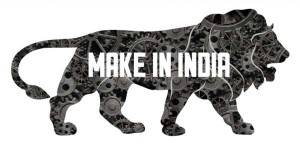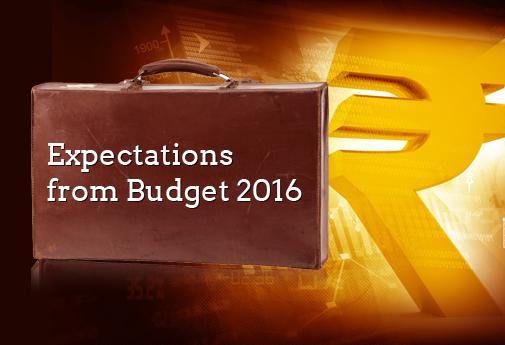
 Prime Minister Narendra Modi’s ‘Make in India’ initiative, which aims to transform country into a global manufacturing hub, has completed one year of its journey.
Prime Minister Narendra Modi’s ‘Make in India’ initiative, which aims to transform country into a global manufacturing hub, has completed one year of its journey.
The ambitious initiative was launched on 25th September last year with the aim of creating millions of jobs in the country.
Under the initiative, the government announced several steps to improve the ease of doing business in the country, and attract foreign investments.

The Prime Minister first made the pitch for ‘Make in India‘ during his maiden Independence Day speech. “If we have to put in use the education, the capability of the youth, we will have to go for manufacturing sector and for this Hindustan also will have to lend its full strength, but we also invite world powers. Therefore I want to appeal all the people world over, from the ramparts of the Red Fort, “Come, make in India”, “Come, manufacture in India”.
The makers of India send a message – Come, #MakeInIndia! https://t.co/yzYusWRctU

— Make in India (@makeinindia) September 25, 2015
We said it then. We are saying it now. Come, #MakeInIndia! pic.twitter.com/KDuYOHCQkV
— Make in India (@makeinindia) September 25, 2015
All you need to know about the initiative:
*25 major ‘Make in India’ focus areas:
- Automobiles
- Automobile Components
- Aviation
- Biotechnology
- Chemicals
- Construction
- Defence manufacturing
- Electrical Machinery
- Electronic systems
- Food Processing
- IT and BPM
- Leather
- Media and Entertainment
- Mining
- Oil and Gas
- Pharmaceuticals
- Ports and Shipping
- Railways
- Renewable Energy
- Roads and Highways
- Space
- Textiles and Garments
- Thermal Power
- Tourism and Hospitality
- Wellness
*Foreign Direct Investment
100% FDI is allowed in all sectors except Space(74%), Defence (49%) and News Media (26%).
*New Initiatives
NEW PROCESSES: Doing business in India just got easier with new de-licensing and deregulation measures reducing complexity, and significantly increasing speed and transparency.
NEW INFRASTRUCTURE: New smart cities and industrial clusters are being developed in identified industrial corridors having connectivity; new youth-focused programs and institutions dedicated to developing specialised skills.
NEW MINDSET: The Make in India program represents an attitudinal shift in how India relates to investors:
a) Dedicated teams that will guide and assist first-time investors, from time of arrival.
b) Focussed targeting of companies across sectors.
*Intellectual Property: Strengths of the Indian IPR Regime
- The IPR framework in India is stable and well established from a legal, judicial and administrative point of view and is fully compliant with the Agreement on Trade-Related Aspects of Intellectual Property Rights.
- India is committed to wide range of international treaties and conventions relating to intellectual property rights.
- Wide range of awareness programmes are being conducted by the Government.
- During the last few years, Indian IP offices have undergone major improvements in terms of upgradation of IP legislation, infrastructure facilities, human resources, the processing of IP applications, computerization, databases, quality services to stakeholders, transparency in functioning and free access to IP-data through a dynamic website.
- State of the art, integrated and IT- enabled office buildings have been created during the last few years in New Delhi, Kolkata, Chennai and Mumbai and Ahmedabad, housing central wings for Patents and Designs and Trademarks and Geographical Indications. The Patent Office is headquartered at Kolkata with branches at New Delhi, Chennai and Mumbai. The Trade Mark Registry, headquartered at Mumbai has branches in Ahmedabad, Chennai, New Delhi and Kolkata. The Design Office is located in Kolkata and the GI Registry is at Chennai. Separate facilities house the ISA/IPEA in New Delhi and additionally, there is an Intellectual Property Office Archives is at Ahmedabad.
- Simplified procedure for filing, e-filing facilities and incentives for SMEs are some of the other initiatives in the area of intellectual property rights in India.
*National Manufacturing
The National Manufacturing Policy is the comprehensive policy initiative taken by the Government. The policy is the first-of-its kind for the manufacturing sector as it addresses areas of regulation, infrastructure, skill development, technology, availability of finance, exit mechanism and other pertinent factors related to the growth of the sector.
Also Read:
*Govt extends scheme to boost electronics manufacturing by 5 years
*Govt gets Rs 90,000-cr investment proposals for electronics manufacturing
*Electronics Manufacturing High on Digital India Wave
*‘Make in India’ drive gets boost from mobile phone industry
Be a part of Elets Collaborative Initiatives. Join Us for Upcoming Events and explore business opportunities. Like us on Facebook , connect with us on LinkedIn and follow us on Twitter, Instagram.










